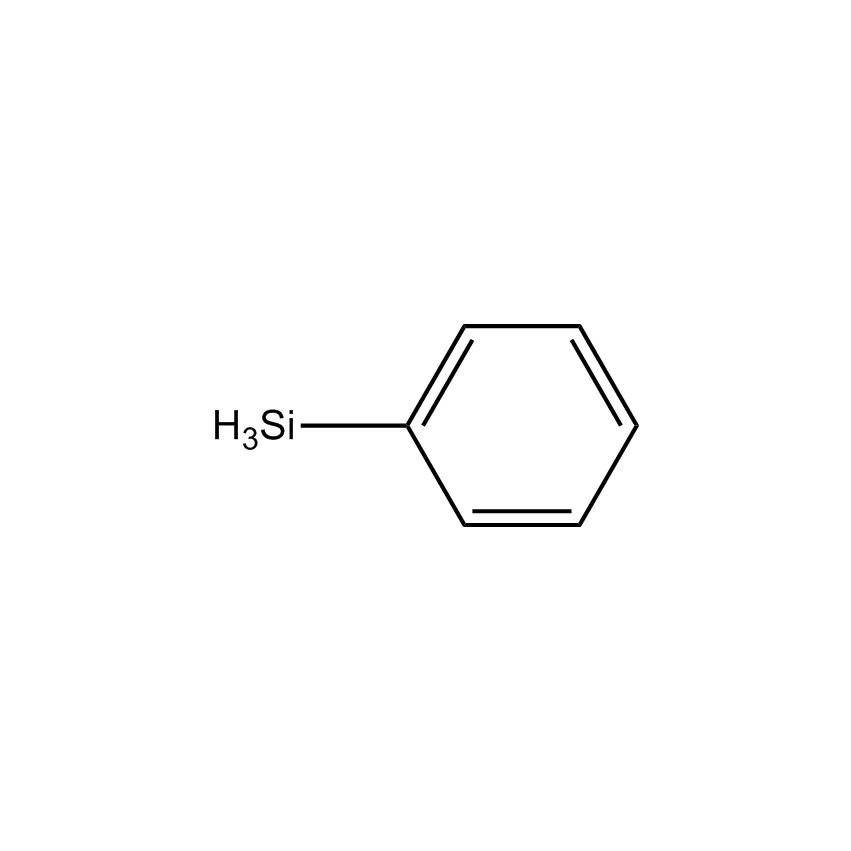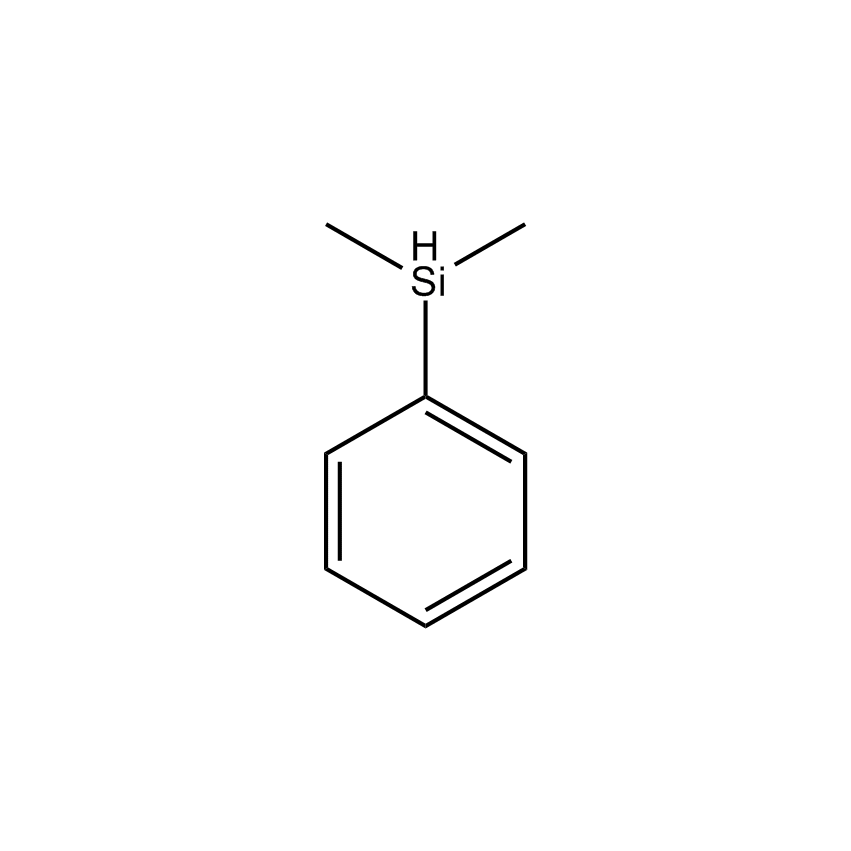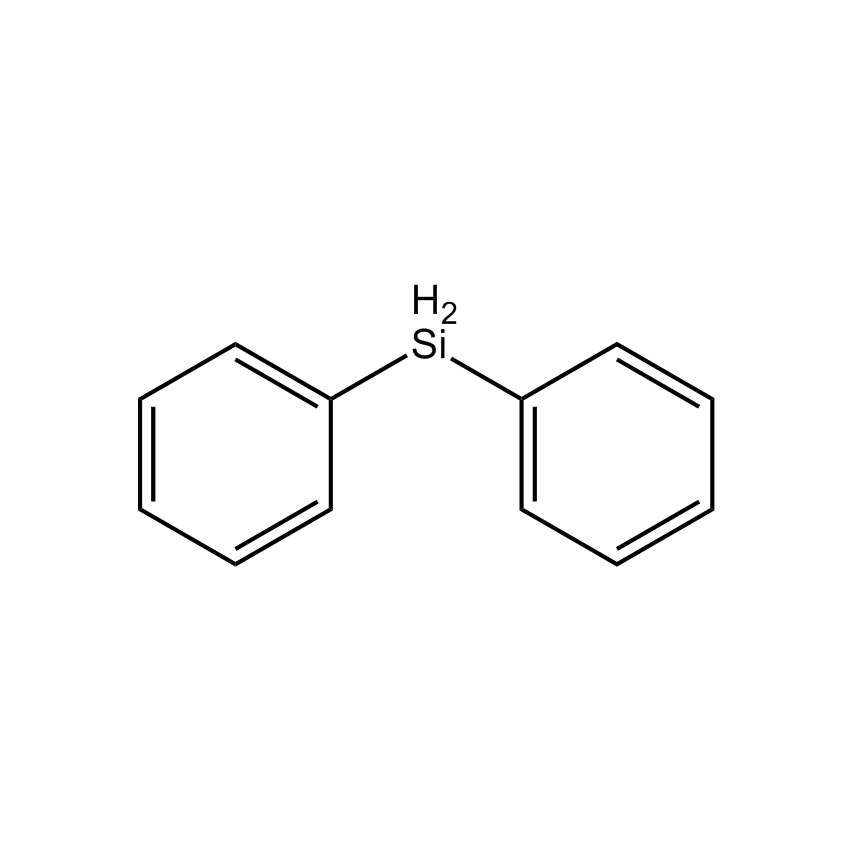Additional Properties
- Einecs Number 211-772-5
- HMIS 2-4-1-X
- Molecular Formula C6H8Si
- Molecular Weight (g/mol) 108.21
- Purity (%) 97%
- TSCA Yes
- Delta H Vaporization (kJ/mol) 8.31 kcal/mole
- Boiling Point (˚C/mmHg) 120°
- Density (g/mL) 0.8681
- Flash Point (˚C) 8 °C
- Melting Point (˚C) -64 to -68°
- Refractive Index @ 20˚C 1.5125
Application
Reducing reagent in radical reductions.1
Yields ISiH3 on treatments with HI in presence of AlI3.2
Adds to norbornene with high ee.3
Reference
1. Barton, D. et al. Synlett 1991, 435.
2. Tamizhmani, G. et al. Chem. Mater. 1990, 2, 473.
3. Gountchev, T. I.; Tilley, T. D. Organometallics 1999, 18, 5661.
Safety
Mono-substituted Silane Reducing Agent
Organosilanes are hydrocarbon-like and possess the ability to serve as both ionic and free-radical reducing agents. These reagents and their reaction by-products are safer and more easily handled and disposed than many other reducing agents. The metallic nature of silicon and its low electronegativity relative to hydrogen lead to polarization of the Si-H bond yielding a hydridic hydrogen and a milder reducing agent compared to aluminum-, boron-, and other metal-based hydrides. A summary of some key silane reductions are presented in Table 1 of the Silicon-Based Reducing Agents brochure.
Trihydridosilane
Silyl Hydrides are a distinct class of silanes that behave and react very differently than conventional silane coupling agents. They react with the liberation of byproduct hydrogen. Silyl hydrides can react with hydroxylic surfaces under both non-catalyzed and catalyzed conditions by a dehydrogenative coupling mechanism. Trihydridosilanes react with a variety of pure metal surfaces including gold, titanium, zirconium and amorphous silicon, by a dissociative adsorption mechanism. The reactions generally take place at room temperature and can be conducted in the vapor phase or with the pure silane or solutions of the silane in aprotic solvents. Deposition should not be conducted in water, alcohol or protic solvents.
Phenylsilane; Silylbenzene
Silicon Chemistry, Applied Technology
Silicon Chemistry, Articles
The Si-H bond, based on the relative electrongativities of Si and H, is polarised such that the hydrogen is slightly hydridic in nature. The fact that the silanes are not strongly hydridic makes them excellent candidates for mild and selective reductions of organic functional groups.
Silicon Chemistry, Articles
The reduction of a comprehensive range of organic functional groups ranging from carboxylic acids to aryl fluorides have been shown to be possible with a variety of organosilanes. A comprehensive review of the ionic and transition metal-catalyzed reductions of organic functional groups has recently appeared.
Silicon Chemistry, Articles
Silicon Chemistry, Articles
Silicon Chemistry, Articles
Some of the general approaches to the key steps in the synthesis of gliflozins, a class of glucose transporters, are discussed. In particular the glycosidation step for the introduction of the key aryl moiety onto the glucose and the reduction steps are presented. Click here for more product information on tetramethyldisiloxane (TMDO, TMDS) reducing agent.



